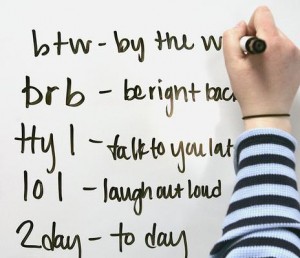 I laughed when I saw this on the list of topics Paul had “assigned” me as a part of the B.A.C.O.N. blog project. This exact topic has been the spark of what has become called “The Great Twitter Debate” that I have been engaged in for months now with a friend.
I laughed when I saw this on the list of topics Paul had “assigned” me as a part of the B.A.C.O.N. blog project. This exact topic has been the spark of what has become called “The Great Twitter Debate” that I have been engaged in for months now with a friend.
To put it mildly, he hates Twitter. His main issues are the truncation of words to fit a 140 character limit as well the use of hashtags (#) and @ mentions, both of which he considers to be barriers of entry to new users. The character limit does force people to be creative or lazy. I (as well as most of the community I am involved with online) do not use the super abbreviated “text speak”. Personally, I am a rambler (I’m sure you have not noticed that here at all) and the limit is a way to get me to be more concise in making my point.
I will be interested in seeing what Paul has to say about this subject as he himself is not on Twitter either. (In fact – he only recently became a Facebook convert from his old friend MySpace, but that is getting incredibly off topic.)
The question posed is has social media changed how people communicate. In my opinion, (or in ‘text speak IMHO, but my opinion is rarely humble) yes it has. The words Tweet*, social media, crowdsourcing & m-commerce have been added to the Merriam-Webster dictionary. People throw around the term “friending” and “like” has a whole new meaning. *Yes – Tweet, not twit – you know who you are.
Is this a bad thing? I don’t think so. A good recent example was last week at the ERAD2C convention in Las Vegas. Thill had a sales team in lace at the show. I communicated with the sales team via texting for quick information sharing. Following Twitter hashtags Both our Director of Business Development and I were able to follow, in real time, what was being said by the hosts of the event and the other attendees as well.
The ‘real time’ factor is one of the most important changes in communication. Looking back at the early stages of email, faxing and even snail mail, getting a response from someone could day hours/days/weeks. Now, with social media, people are expecting an answer almost instantaneously. This is both a positive and a negative. Many companies use social media as branch of the customer service team.
The informality of social media is another way that communication has changed. It allows for businesses to interact more with the consumer base on a casual level, allowing the customer to get to know the business and have a trust grown. There is, of course, two sides to this. This informality can lead to sticky situations “friending” your boss or having a coworker “follow” you on Foursquare. With careful management, a person can avoid major faux pas.
Do you use social media as a part of your business communication? Let us know.

